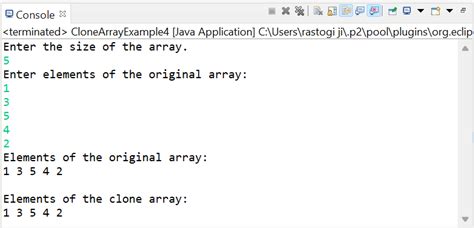The clone() method in Java is used to create a copy of an object. It is defined in the java.lang.Object class and provides a way to produce a shallow copy of an object. When you invoke the clone() method on an object, it creates and returns a new object of the same class with the same data as the original object.
It's important to note that the clone() method produces a shallow copy, meaning that if the original object contains references to other objects, the cloned object will also reference the same objects. This can lead to unintended side effects if you're not careful.
In order to use the clone() method, the class of the object you want to clone must implement the Cloneable interface. This interface acts as a marker to indicate that the class supports cloning. If you attempt to clone an object of a class that does not implement Cloneable, a CloneNotSupportedException will be thrown at runtime.
Let's consider an example to illustrate the use of the clone() method:
```java
class Person implements Cloneable {
private String name;
private int age;
public Person(String name, int age) {
this.name = name;
this.age = age;
}
public void setName(String name) {
this.name = name;
}
public void setAge(int age) {
this.age = age;
}
public Object clone() throws CloneNotSupportedException {
return super.clone();
}
@Override
public String toString() {
return "Person [name=" name ", age=" age "]";
}

}
public class Main {
public static void main(String[] args) {
Person person1 = new Person("Alice", 30);
try {
Person person2 = (Person) person1.clone();
System.out.println(person2);
} catch (CloneNotSupportedException e) {
e.printStackTrace();
}
}
}
```
In this example, the clone() method is overridden to call super.clone() and cast the result to the appropriate type. Then, in the Main class, we create a new object person2 by cloning the original person1.
While the clone() method can be useful, it's important to use it carefully due to the potential for unexpected behavior, especially when dealing with mutable objects and deepcopy requirements. Some best practices to keep in mind include:
By understanding the behavior of the clone() method and following best practices, you can leverage it effectively in your Java programs while avoiding potential pitfalls.
文章已关闭评论!
2024-11-26 21:13:24
2024-11-26 21:11:53
2024-11-26 21:10:26
2024-11-26 21:08:59
2024-11-26 21:07:33
2024-11-26 21:06:08
2024-11-26 21:04:48
2024-11-26 21:03:39